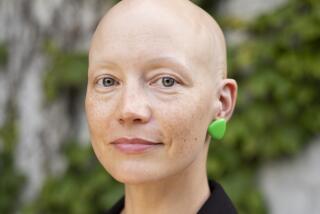Scientific meditations on the passage of time
NO one who has read Margaret Drabble’s novel “The Peppered Moth” can doubt her keen interest in science. In fact, Britain’s venerable scientific association the Royal Society asked her to help judge its Aventis Science Book Prize in 2003. As she writes in a note to her latest book, “The Sea Lady,” the judging was “a task which I enjoyed so much that it prompted me to attempt a novel with a man of science as its protagonist.”
The book begins with an instantly engaging description of a public figure negotiating the shoals of a prize-giving ceremonial occasion that must owe a great deal to Drabble’s experience.
Not only does scientist Humphrey Clark think in scientific terms, but Ailsa Kelman, the celebrity judging the science book prize who is his co-protagonist, speaks that way too.
Warily looking into the eyes of a longtime adversary just after the prize ceremony, Ailsa muses: “How had they become their savage selves? It was a mystery. They had mutated. They had evolved into hard-jawed monsters of the deep, sexless, battle-scarred, smooth with defensive plating, enclosed in ageless shell.”
Indeed, the novel as a whole expresses itself in extended scientific metaphors, but where at times the narrative of “The Peppered Moth” seemed in danger of becoming a mere mannerism by this technique, here Drabble uses the imagery in a more fruitful manner. The result is a book that is diverting, even funny, while at the same time profoundly serious and meaningful.
The subject of “The Sea Lady” is not so much science and its overlay of matters biological, evolutionary and ecological. What it is really about is life: change, the passage of time and what it has wrought.
After the prize ceremony, Ailsa returns to the forlorn seaside resort in the depressed northeastern corner of England where she and Humphrey had met briefly as children. This time, as each prepares to receive an honorary degree, they meditate on their lives.
Humphrey is world-weary and ruthlessly self-analytical:
“Now he knew it all. He had lived through the austere fifties, and the liberating sixties, and the shifty seventies, and the mercenary eighties, and the power-driven, value-free nineties. He had become worldly, and at home in the world. He had grown leathery with age, invulnerable, thick of skin, and idly, imperviously pleasant. He had worked hard at this transformation.”
Ailsa is no less devastating in her judgment of what has become of her aging self:
“Staying her eye on the glass, her elderly self looked back at her. She was in her sixties now, and she was older than the ancient sunken-cheeked Mother Longbone had been all those summers ago. She was ashen-grey, and at times she looked her age. The power was ebbing and seeping and leaking away, and at times she was afraid.”
But it would be a mistake to think that “The Sea Lady” is a depressing book: far from it, and not only because of the impressive ability not to flinch so pithily expressed in the marvelous prose. Much of the action takes place in the past, in the Wordsworthian realm of childhood. As the plot unfolds and reveals myriad interlinkings and unexpected connections, it becomes clear that, in the words of that great Romantic poet, the child is indeed father to the man.
This novel attempts to explore the nature of its protagonists’ lives, what they have and have not been able to accomplish, what -- if anything -- their existence has been for.
As you travel alongside these journeys of self-exploration, you share in the insights and in the growth of the characters’ minds. Much is revealed, much is explained, but not everything. Drabble is too wise a writer to offer pat solutions:
Ailsa “runs into the water. Only the mad swim in the North Sea, but the sea is in her blood, and her salt blood meets the salt water. She gasps, she splashes, she strikes out, she waves to shore, and she flounders. She disports herself amid the warmer shallows, which are forever renewed by the cold wash of the incoming main.
“As Humphrey watches her antics, it comes to him that forgiveness need not be maintained in time. It may come in an instant, like grace. It need not endure. One may be redeemed in an instant. Repentance needs only an instant, a measurement too small to show on the clock face. They have forgiven one another, for this instant, and that will suffice.”
The language of science mixes with that of religion to produce a holistic, humanistic resolution worthy of that great poet Wordsworth, a lodestar for Drabble throughout her writing career -- he provided the epigraph to her first novel.
Reading “The Sea Lady” with its hard-won victories and triumphs reminded me not only of English Romantic poetry but also of that greatest of literary figures, Shakespeare. I kept thinking of the beautiful Sonnet 73 -- which begins “That time of year thou mayst in me behold” -- with its autumnal atmosphere and its evocation of the pathos of age as well as the lines from “Macbeth” that say “my way of life / Is fall’n into the sere, the yellow leaf.” Drabble has imbued her novel with a like feeling and created a true thing of beauty.
*
Martin Rubin is a critic and the author of “Sarah Gertrude Millin: A South African Life.”
More to Read
Sign up for Essential California
The most important California stories and recommendations in your inbox every morning.
You may occasionally receive promotional content from the Los Angeles Times.










